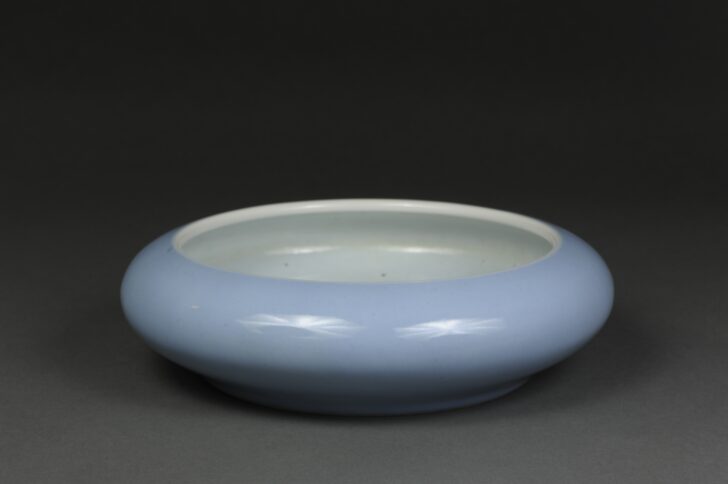Washer
Chinese

Description
Subject Matter:
For centuries, the principal colors of Chinese monochrome ceramic wares were shades of green, amber, and brown that resulted from firing iron-oxide glazes in kilns under controlled conditions and temperatures. During the Qing dynasty, however, three successive emperors—Kangxi, Yongzheng, and Qianlong—each took a personal interest in ceramics production at the imperial kilns in Jingdezhen, Jiangxi province. Under their direction, new superintendents revived the kilns, streamlining production, introducing new vessel shapes, and successfully expanding the repertoire of monochrome glazes to include jewel-toned colors now bearing fanciful Western names like chicken fat yellow, peach-bloom and sang de boeuf (oxblood) red, and robin’s egg and clair de lune (moonlight) blue, as seen in this case.
Physical Description:
A clair de lune washer with a large base, a short bulging middle, and a rim that curves inward. It has a Qianlong reign mark on the bottom.
Usage Rights:
If you are interested in using an image for a publication, please visit https://umma.umich.edu/request-image/ for more information and to fill out the online Image Rights and Reproductions Request Form.